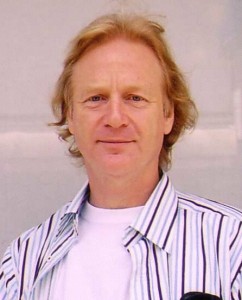
Here’s a new post from our good friend, John Dougill.
Near Shijo Omiya is a small museum called Furansisko no Ie. From the outside it’s unremarkable; inside is a small exhibition room with items from the sixteenth and seventeenth centuries. They represent the time when Christianity first arrived in Japan, before falling into disfavour and being banned.

What marks the museum out is its location, for the site is associated with one of the most dramatic events of the period: the crucifixion of the 26 Martyrs at Nagasaki in 1597.

The episode originated four years earlier, when the Spanish governor of the Philippines sent a delegation headed by a Franciscan friar. He petitioned Hideyoshi for permission to build a small monastery where the museum now stands. With three others he ran a hospital, and the charitable works soon resulted in converts. The surrounding area became known as ‘Dios machi’ for the number of Christians.

In 1596 a Spanish galleon named the San Felipe was shipwrecked off Shikoku and the cargo seized. The enraged pilot threatened the authorities by claiming missionaries in Japan were the advance guard of the Spanish king whose armies would colonize them, just as they had in S. America.
When news of this reached Hideyoshi, he ordered a round-up of Catholics and twenty-four Franciscans were seized in Kyoto and Osaka (Jesuits were spared for fear of disrupting the Portuguese trade). The ears of the captives were cut off and the prisoners publicly paraded, before being force-marched all the way to the Christian stronghold of Nagasaki. Two volunteers accompanying the men to give comfort were also arrested and added to the group.

At Nagasaki the 26 Martyrs were publicly crucified. Six were foreign priests (one was an unfortunate Mexican heading home from the Philippines aboard the San Felipe). The rest were Japanese laymen, the youngest of whom was just twelve years old.
Though Catholicism continued to be tolerated, it remained suspect and in 1614 came a nationwide ban. A period of persecution followed in which over 4000 are known to have died and many more subjected to horrendous torture. It drove the church underground, as described in Endo Shusaku’s novel, Silence.
During the age of isolation it was thought the religion had been eradicated. Only after 1865, with the return of foreign priests, was it realised that for seven generations pockets of Hidden Christians had handed down their beliefs in secret. It was an astonishing story, and one whose history is recorded in the artifacts of the Furansisko no Ie.

******************************

Text and images by John Dougill. All rights reserved.
John Dougill is professor of British Studies at Kyoto’s Ryukoku University and the author of Kyoto: A Cultural History, In Search of the Hidden Christians, and Japan’s World Heritage Sites. He is also a contributor to our book, Deep Kyoto: Walks.
2025 Update: Furansisko no Ie was demolished in the autumn of 2013 “due to deterioration.” Although the house was rebuilt in 2014, the museum it held no longer exists.


Leave a Reply